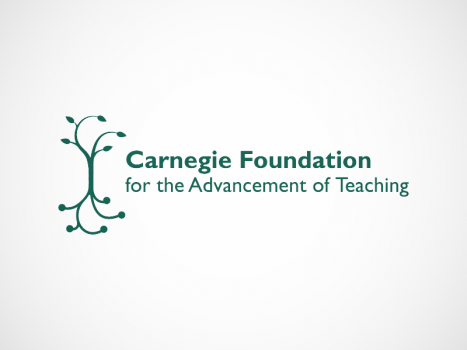Learning Opportunities: Productive Struggle, Explicit Connections and Deliberate Practice
If you were able to participate in the webinar, “It’s Not Just the Curriculum: Developing Pathways for Student Success in Community Colleges,” in January, you heard that Carnegie’s work in developmental mathematics in community colleges — the Statway™ and Quantway™ pathways — is not just another curriculum product or educational technology. Instead, the instruction includes six components. First, we are teaching the math that matters in students’ work, personal and civic lives. Second, given the diverse backgrounds of students in this sector, there are language and literacy supports interwoven through the materials and classroom activities and embedded in the instructional design. Third, we have introduced something called productive persistence to the pathways, science-based activities packaged to increase student motivation, skills and will to succeed in college. The fourth “ingredient” of this mix is learning opportunities: productive struggle, explicit connections and deliberate practice. Fifth, the advancing teaching component aims to provide instructors with the knowledge, skills and habits necessary to experience efficacy in initial use and develop increasing expertise over time. This dimension is essential in seeking to reduce the variability in outcomes among classrooms serving similar students. Finally, we seek to exploit how rapid informative analytics can inform continuous improvements by students, faculty, colleges and network-wide. Operating throughout the instructional system, we seek to tap technology as a powerful tool to advance efficacy, efficiency and personalization in the work of students and faculty alike.
These form a foundation for the lessons within these new innovative pathways for developmental math students. During last year’s Summer Institute, participants in Carnegie’s Networked Improvement Communities attended a session on learning opportunities. In this session, Kay Merseth, a senior fellow working with Carnegie on a thread of work called Advancing Teaching, prepared an essay that beautifully explains what the three learning opportunities are and what they mean to both students and faculty.
Briefly, in Kay’s words:
“The focus of the productive struggle is on the mathematical learning goals embedded in the problem or situation — it’s not about guessing what the teacher wants to hear or about finding a particular answer. It is about the process of thinking, making sense, and persevering in the face of not knowing exactly how to proceed or whether a particular approach will work. Exploring, investigating one or multiple approaches, and articulating a chain of reasoning behind the approaches also characterize productive struggle.
Within the Pathway materials the idea of explicit connections refers to the linkages or relationships among and between mathematical and/or statistical facts, procedures, and concepts. Explicit connections generally reference math ideas and concepts and may be about context as well. Connections may be drawn by students or faculty, but most often are presented and reinforced by faculty.
Deliberate practice consists of a set of tasks for students that are created to overcome gaps in understanding, apply what has been learned, and/or deepen fluency with key concepts.”
To learn much more about these learning opportunities, read Kay’s essay, “Learning Opportunities for Pathway Classrooms.”
_______________________________________________
Ed. note: This post has been revised from the original.
The original post did not include the fifth and sixth components of the pathways. These components — advancing teaching and rapid informative analytics — will be discussed further in future posts.
February 9, 2012
You might be interested in the release of a couple of reports on community colleges and a news article on the budget situation in California and how community colleges are affected. OPEN-DOOR POLICIES AT TWO-YEAR COLLEGES FACE THREAT, REPORT SAYS The nation’s college-completion agenda may be threatening open-door admissions policies at two-year institutions, says…
March 1, 2012
Two new studies from the Community College Research Center at Columbia University’s Teachers College found that more community college students are in remedial education classes than need be. The studies found that more than a quarter of the students assigned to remedial classes based on placement test scores could have…






